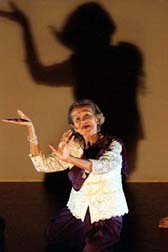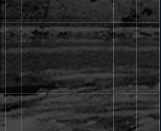|
These
have been the concerns of Ong Keng Sen who, as artistic director
of the Singapore-based company TheatreWorks, founded the Flying
Circus Project in 1994, an intercultural, multimedia workshop to
explore the encounter between traditional performance arts and the
contemporary world. His internationally known productions have tended
to be large and ambitious, such as the recent Desdemona,
which began with Shakespeare’s story, then was adapted by a
Japanese playwright, elaborated by Korean musicians, Indian dancer-actors,
a Burmese traditional puppeteer, two video artists (Singapore and
Korea), and a U.S. lighting designer, culminating in a work that
confronted, among other things, sexual and colonial domination.
Until he came to Cambodia, however, had he ever encountered the
forces fundamental to his concerns at such an elemental level? There,
as he put it in an interview this past June at the International
Festival of Arts and Ideas in New Haven, Connecticut, he met myth
before it had become myth, art before it had become art.

Photo
Copyright@ Mara Lavitt |
He
had come to Cambodia in September 2000 in hopes of finding traditional
artists to bring to Singapore and participate in the Flying Circus.
There he met the 68-year-old Em Theay, a principal classical dancer
and singer who had survived Pol Pot. She is among those called "tenth
dancers": for each one who lived, nine others didn’t.
Three of her sisters, all dancers, perished, along with four of
her eight children, a granddaughter and a son-in-law. She is now
a kru, a master teacher (cf. the Indian guru), imparting
her art to a generation largely cut off from a tradition, aspects
of which reach back 1700 years. Keng Sen already had an idea to
do a characteristically large piece, incorporating the lives and
works of six or seven such elder artists from different parts of
Asia. When Cynthia Hedstrom, Program Director of the New Haven festival,
expressed interest in his Cambodian encounter, an idea began to
take shape.
Surprisingly, doubt and opposition were strongest among those who
had come to Cambodia to help relieve its devastated population,
such as workers in the numerous non-governmental organizations who
have been in the country for years now. Keng Sen is famous as an
"avant-garde" director, who throws artists from different
backgrounds together in freely experimental ways that he calls "cultural
negotiation." To bring performers like Em Theay into situations
in which they would have to interact with others from less fragile
and more up-to-date backgrounds, confronting the disaster of their
personal histories would throw out of balance their hard-won equilibrium.
They had not experienced the horror as artists but as human beings.
How could they be expected to exploit it as material for someone
else’s esthetics? This effort to protect some of the 20th century’s
most damaged victims was understandable and discouraging.
|
|


